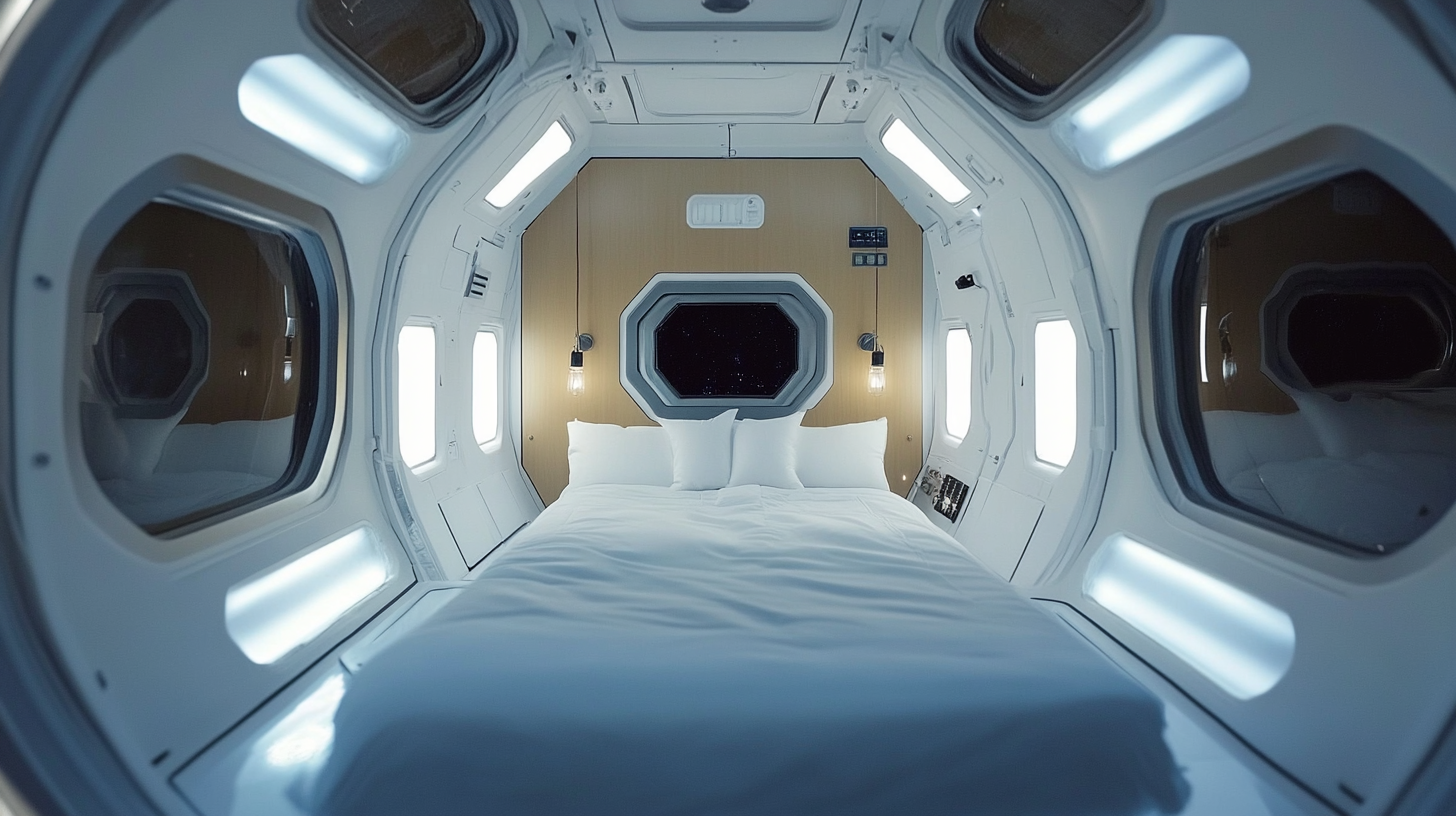In recent decades, the discovery and exploration of space have been fueled by increasing international collaboration and growing ambitions in the private sector. Projects such as the International Space Station (ISS), missions to the Moon and Mars, and the numerous developments in space tourism are just a few of the key milestones marking the evolution of space engineering. In this context, a new and bold vision is taking shape: Voyager Station, a commercial space station project that will mark an evolutionary leap in space living and working.
Designed by Orbital Assembly Corporation (OAC), Voyager Station is set to become the first permanent human habitat in space with artificial gravity. It is not just another space station, but an environment designed to host space tourists, scientists, entrepreneurs, and researchers, offering them an innovative combination of comfort and scientific opportunities never before seen in an orbital structure.
The design of Voyager Station: an innovative space infrastructure
The ring structure
The most remarkable feature of Voyager Station is its toroidal design, which sets it apart from traditional space stations. Imagine a giant wheel spinning in space. The design involves a ring-shaped structure with a diameter of approximately 200 meters, rotating around its longitudinal axis to generate artificial gravity. This rotation creates a centrifugal force that mimics gravity, providing an environment where the station’s occupants can move with a feeling similar to that on Earth.
The station’s rotation speed will be slow enough to avoid stress on its inhabitants, allowing for a variable gravity between 0.3 G and 0.8 G. This is a crucial step in counteracting the negative effects of microgravity, such as bone and muscle loss, which affect astronauts during long-term missions.
The modules: function and comfort
Voyager Station will consist of a series of pressurized modules, each designed for specific functions. The modular architecture allows the station to be adapted and redesigned based on operational needs.
- Habitable modules to accommodate space tourists and long-term residents. These environments will be equipped with all necessary comforts, from a space kitchen to sanitary services, and designed for a high quality of life, making the orbital experience as Earth-like as possible.
- Scientific laboratories equipped with the most advanced technologies for research in both microgravity and artificial gravity. The station will offer ideal conditions for biological, chemical, and advanced materials experiments, enabling studies that would be impossible to conduct on Earth.
- Commercial areas for offices, events, and even small-scale production activities that exploit the unique gravitational conditions to create exceptional products, such as ultrapure optical fibers or high-quality pharmaceutical crystals.
- Recreational and social spaces, including restaurants, gyms, cinemas, and even areas for events and conferences in space. These spaces will allow guests to enjoy the experience of living in space in a comfortable and stimulating environment.
Energy generation and life support
As an orbiting structure, Voyager Station must be energy self-sufficient. For this reason, it will be equipped with high-efficiency photovoltaic solar panels distributed around its circumference. These panels will provide the energy necessary for the station’s daily operations.
Life support will also be designed to ensure a safe and sustainable environment for its inhabitants. Water recycling systems and air management systems, along with waste management, will be crucial to maintain the station’s self-sufficiency. Atmospheric control systems will ensure that the air composition is always ideal for human respiration, while water recycling systems will guarantee efficient resource usage.
Scientific, commercial, and social applications
Research and innovation Oopportunities
One of Voyager Station’s distinguishing features is its ability to offer a controlled gravity environment, which opens new horizons for scientific research. Artificial gravity will allow biological, medical, and material experiments to be conducted in a setting that simulates the partial gravity conditions that may be encountered on Mars or the Moon. Applications include:
- Biological and medical studies to better understand the effects of gravity on human cells and living organisms.
- Advanced materials experiments, such as the production of high-quality optical fibers and pharmaceutical crystals.
- Long-duration environment simulation to prepare humanity for future missions to other celestial bodies.
Space tourism and stay
Space tourism is expected to become one of the primary revenue sources for Voyager Station. With artificial gravity and a comfort-oriented environment, guests will be able to experience a unique stay in orbit. The stay won’t be limited to short trips but could extend to weeks, giving guests the opportunity to explore our planet from an extraordinary perspective.
Investments and project roadmap
Building Voyager Station represents an economic and technological challenge of unprecedented proportions. The total project cost is estimated to range between $3 billion and $5 billion, with station completion projected for the late 2020s.
Project phases
- 2025-2027: Testing and launching of initial modules.
- 2028-2029: Orbital assembly and construction of primary habitat and scientific modules.
- 2030 and beyond: Commercial operations begin, with openings to tourists, researchers, and businesses.
Access to the station will initially be limited to high-end travelers, but there is a forecasted gradual reduction in costs as operational efficiency increases and launch and maintenance costs decrease.
Conclusion: A new horizon for humanity
Voyager Station is not just a space station: it is a symbol of the new era of space exploration, where advanced engineering and commercial vision combine to create a self-sustaining environment in space. With its unique combination of artificial gravity, scientific research, and space tourism, Voyager Station represents a key step toward the colonization of deep space and the expansion of humanity’s presence beyond Earth.






